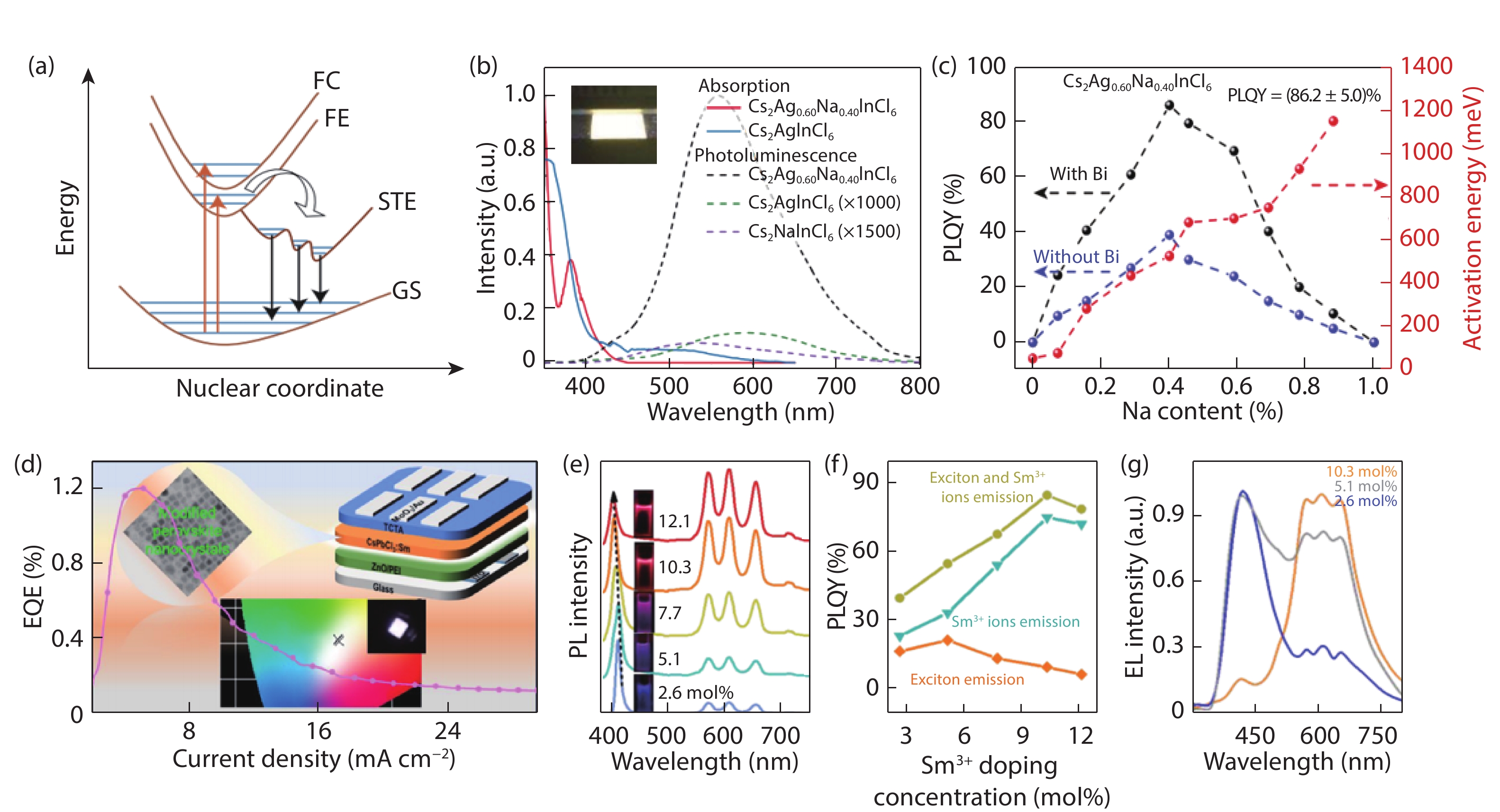| Citation: |
Hengyang Xiang, Chuantian Zuo, Haibo Zeng, Liming Ding. White light-emitting diodes from perovskites[J]. Journal of Semiconductors, 2021, 42(3): 030202. doi: 10.1088/1674-4926/42/3/030202
H Y Xiang, C T Zuo, H B Zeng, L M Ding, White light-emitting diodes from perovskites[J]. J. Semicond., 2021, 42(3): 030202. doi: 10.1088/1674-4926/42/3/030202.
Export: BibTex EndNote
|
-
References
[1] Nakamura S, Mukai T, Senoh M. Candela-class high-brightness InGaN/AlGaN double-heterostructure blue-light-emitting diodes. Appl Phys Lett, 1994, 64, 1687 doi: 10.1063/1.111832[2] Pimputkar S, Speck J S, DenBaars S P, et al. Prospects for LED lighting. Nat Photonics, 2009, 3, 180 doi: 10.1038/nphoton.2009.32[3] Tang C W, VanSlyke S A. Organic electroluminescent diodes. Appl Phys Lett, 1987, 51, 913 doi: 10.1063/1.98799[4] Kido J, Kimura M, Nagai K. Multilayer white light-emitting organic electroluminescent device. Science, 1995, 267, 1332 doi: 10.1126/science.267.5202.1332[5] Jiang C B, Zou J H, Liu Y, et al. Fully solution-processed tandem white quantum-dot light-emitting diode with an external quantum efficiency exceeding 25%. ACS Nano, 2018, 12, 6040 doi: 10.1021/acsnano.8b02289[6] Tan Z K, Moghaddam R S, Lai M L, et al. Bright light-emitting diodes based on organometal halide perovskite. Nat Nanotechnol, 2014, 9, 687 doi: 10.1038/nnano.2014.149[7] Song J Z, Li J H, Li X M, et al. Quantum dot light-emitting diodes based on inorganic perovskite cesium lead halides (CsPbX3). Adv Mater, 2015, 27, 7162 doi: 10.1002/adma.201502567[8] Hou S C, Gangishetty M K, Quan Q M, et al. Efficient blue and white perovskite light-emitting diodes via manganese doping. Joule, 2018, 2, 2421 doi: 10.1016/j.joule.2018.08.005[9] Luo J, Wang X, Li S, et al. Efficient and stable emission of warm-white light from lead-free halide double perovskites. Nature, 2018, 563, 541 doi: 10.1038/s41586-018-0691-0[10] Sun R, Lu P, Zhou D L, et al. Samarium-doped metal halide perovskite nanocrystals for single-component electroluminescent white light-emitting diodes. ACS Energy Lett, 2020, 5, 2131 doi: 10.1021/acsenergylett.0c00931[11] Chen J W, Wang J, Xu X B, et al. Efficient and bright white light-emitting diodes based on single-layer heterophase halide perovskites. Nat Photonics, 2020, 1 doi: 10.1038/s41566-020-00743-1[12] Liu X K, Xu W D, Bai S, et al. Metal halide perovskites for light-emitting diodes. Nat Mater, 2021, 20, 10 doi: 10.1038/s41563-020-0784-7 -
Proportional views






 DownLoad:
DownLoad:
















